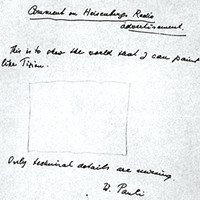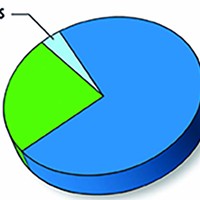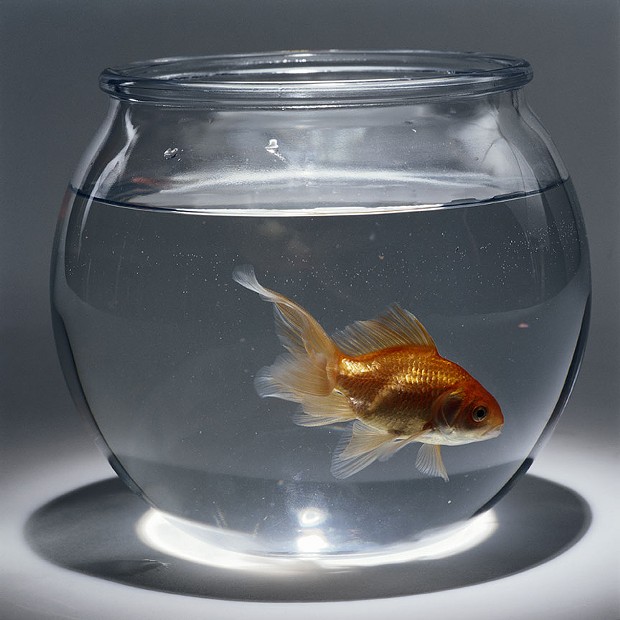[
{
"name": "Top Stories Video Pair",
"insertPoint": "7",
"component": "17087298",
"parentWrapperClass": "fdn-ads-inline-content-block",
"requiredCountToDisplay": "1"
}
]
T he City Council in Monza, the northern Italian city known for its Formula 1 Grand Prix, is barring pet owners from keeping their goldfish in bowls. ... The measure's sponsor said, "A fish kept in a bowl has a distorted view of reality and suffers because of this." — New York Times, 2004.
Commenting on this in the October 2010 Scientific American, physicists Stephen Hawking and Leonard Mlodinow wondered whether the goldfish version of reality is any less authentic than ours. "For all we know, we, too, may spend our entire lives staring out at the world through a distorting lens," they said.
The what is real? game has a long history. Three hundred years ago, the Irish empiricist George Berkeley got the ball rolling by noting that the only thing we can perceive are our perceptions: We can't observe the world directly. Color, sound, shapes, harmonies, aromas and tastes exist only in our heads. We can't even be sure that there is an outside world whence all these perceptions originate. We don't, of course, adopt this point of view in our day-to-day lives; we brake for pedestrians, we don't ponder whether they're fantasies in our minds. We live our lives (and scientists investigate) based on the notion of "realism," the belief that an external world does exist, with properties independent of who's looking at it.
As I've discussed previously in this column (April 28, 2011), the Matrix movies presume that what people take to be the real world is actually computer-generated. You can (if you're Keanu Reeves) wake up and have Laurence Fishburne welcome you to the real world — but you might be left wondering if it's all nesting dolls. Maybe that real world is yet another illusion, as was briefly explored in the third part of the trilogy. In Richard Linklater's movie Waking Life, the protagonist keeps waking up, only to discover he's still dreaming (bet you know that one). I've heard Buddhists and other truth-seekers insist on the possibility of experiencing an unfiltered view of reality, "an unsurpassed, complete, perfect enlightenment," as the seventh century Heart Sutra has it. But how can we ever know what's really real?
This isn't just ivory-tower sophistry. Since the 1920s, quantum physics experiments have routinely shown that reality depends on whether anyone's watching, the "tree falling in the forest" conundrum. In the notorious "double-slit" experiment, a photon behaves like a bullet when someone's watching, passing through either one of two slits. Absent an observer, it behaves like a wave, seeming to pass through both slits simultaneously. The quantum universe is illogical to "macro" world inhabitants like ourselves.
If this is the sort of stuff that keeps you awake at night, I recommend Biocentrism: How Life and Consciousness Are the Keys to Understanding the True Nature of the Universe, in which stem cell researcher/philosopher Robert Lanza argues that mainstream science has completely missed the boat in saying that conscious life is created by the universe. Not so, says Lanza, it was the other way around: Consciousness created the universe. No consciousness, no universe.
I'll get back to you on that.
Barry Evans ([email protected]) will be signing copies of his third Field Notes compendium ("Bride of Field Notes") at Eureka Books during Arts Alive on Saturday, Nov. 2 from 6 p.m.
Speaking of...
-

Rocket Science
Oct 26, 2023 -

Don't Shoot the Physicist!
Oct 21, 2021 -

Dark Energy: Blunder or Boondoggle?
Jan 23, 2020 - More »
more from the author
-
A Brief History of Dildos
- Apr 11, 2024
-
Eclipse!
- Mar 28, 2024
-
The Little Drone that Could
- Mar 14, 2024
- More »
Latest in Field Notes
Readers also liked…
-
Trouble on the Line: The Reality Part 2
- Nov 3, 2022


































